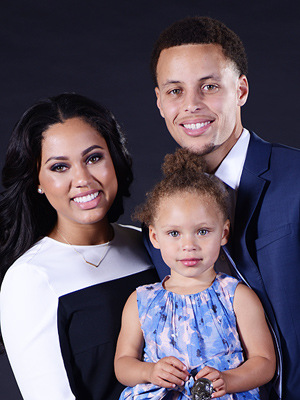By Darryl Fears
Washington Post Staff Writer
At her small apartment near the National Cathedral in Northwest Washington, Maria Martins quietly watched as an African American friend
studied a picture of her mother. "Oh," the friend said, surprise in her voice. "Your mother is white."
She turned to Martins. "But you are black."
That came as news to Martins, a Brazilian who, for 30 years before immigrating to the United States, looked in the mirror and saw a morena
-- a woman with caramel-colored skin that is nearly equated with whiteness in Brazil and some other Latin American countries. "I didn't realize
I was black until I came here," she said.
That realization has come to hundreds of thousands of dark-complexioned immigrants to the United States from Brazil, Colombia, Panama
and other Latin nations with sizable populations of African descent. Although most do not identify themselves as black, they are seen that way
as soon as they set foot in North America.
Their reluctance to embrace this definition has left them feeling particularly isolated -- shunned by African Americans who believe they are
denying their blackness; by white Americans who profile them in stores or on highways; and by lighter-skinned Latinos whose images
dominate Spanish-language television all over the world, even though a majority of Latin people have some African or Indian ancestry.
The pressure to accept not only a new language and culture, but also a new racial identity, is a burden some darker-skinned Latinos say they
face every day.
"It's overwhelming," said Yvette Modestin, a dark-skinned native of Panama who works as an outreach coordinator in Boston. "There's not a
day that I don't have to explain myself."
E. Francisco Lopez, a Venezuelan-born attorney in Washington, said he had not heard the term "minority" before coming to America.
"I didn't know what it meant. I didn't accept it because I thought it meant 'less than,' " said Martins, whose father is black. " 'Where are you from?' they ask me. I say
I'm from Brazil. They say, 'No, you are from Africa.' They make me feel like I am denying who I am."
Exactly who these immigrants are is almost impossible to divine from the 2000 Census. Latinos of African, mestizo and European descent -- or any mixture of the
three -- found it hard to answer the question "What is your racial origin?"
Some of the nation's 35 million Latinos scribbled in the margins that they were Aztec or Mayan. A fraction said they were Indian. Nearly forty-eight percent
described themselves as white, and only 2 percent as black. Fully 42 percent said they were "some other race."
Between Black and White
Race matters in Latin America, but it matters differently.
Most South American nations barely have a black presence. In Argentina, Chile, Peru and Bolivia, there are racial tensions, but mostly between indigenous Indians
and white descendants of Europeans.
The black presence is stronger along the coasts of two nations that border the Caribbean Sea, Venezuela and Colombia -- which included Panama in the 19th
century -- along with Brazil, which snakes along the Atlantic coast. In many ways, those nations have more in common racially with Puerto Rico, Cuba and the
Dominican Republic than they do with the rest of South America.
This black presence is a legacy of slavery, just as it is in the United States. But the experience of race in the United States and in these Latin countries is separated by
how slaves and their descendants were treated after slavery was abolished.
In the United States, custom drew a hard line between black and white, and Jim Crow rules kept the races separate. The color line hardened to the point that it was
sanctioned in 1896 by the Supreme Court in its decision in Plessy v. Ferguson, which held that Homer Plessy, a white-complexioned Louisiana shoemaker, could
not ride in the white section of a train because a single ancestor of his was black.
Thus Americans with any discernible African ancestry -- whether they identified themselves as black or not -- were thrust into one category. One consequence is
that dark-complexioned and light-complexioned black people combined to campaign for equal rights, leading to the civil rights movement of the 1960s.
By contrast, the Latin countries with a sizable black presence had more various, and more fluid, experiences of race after slavery.
African slavery is as much a part of Brazil's history as it is of the United States's, said Sheila Walker, a visiting professor of anthropology at Spelman College in
Atlanta and editor of the book "African Roots/American Cultures." Citing the census in Brazil, she said that nation has more people of African descent than any other
in the world besides Nigeria, Africa's most populous country.
Brazil stands out in South America for that and other reasons. Unlike most nations there, its people speak Portuguese rather than Spanish, prompting a debate over
whether Brazil is part of the Latino diaspora.
Brazilian slavery ended in 1889 by decree, with no civil war and no Jim Crow -- and mixing between light- and dark-complexioned Indians, Europeans, Africans
and mulattoes was common and, in many areas, encouraged. Although discrimination against dark-complexioned Brazilians was clear, class played almost as
important a role as race.
American-influenced Cuba was also home to the Ku Klux Klan Kubano and other anti-black groups before Fidel Castro's revolution. Now, Cuban racism still
exists, some say, but black, mulatto and white people mix much more freely. Lopez, the Afro-Venezuelan lawyer, said, "Race doesn't affect us there the way it does
here," he said. "It's more of a class thing."
Jose Neinstein, a native white Brazilian and executive director of the Brazilian-American Cultural Institute in Washington, boiled down to the simplest terms how his
people are viewed. "In this country," he said, "if you are not quite white, then you are black." But in Brazil, he said, "If you are not quite black, then you are white."
Someone with Sidney Poitier's deep chocolate complexion would be considered white if his hair were straight and he made a living in a profession. That might not
seem so odd, Brazilians say, when you consider that the fair-complexioned actresses Rashida Jones of the television show "Boston Public" and Lena Horne are
identified as black in the United States.
Neinstein remembered talking with a man of Poitier's complexion during a visit to Brazil. "We were discussing ethnicity," Neinstein said, "and I asked him, 'What do
you think about this from your perspective as a black man?' He turned his head to me and said, 'I'm not black,' " Neinstein recalled. " . . . It simply paralyzed me. I
couldn't ask another question."
By the same token, Neinstein said, he never perceived brown-complexioned people such as Maria Martins, who works at the cultural institute, as black. One day,
when an African American custodian in his building referred to one of his brown-skinned secretaries as "the black lady," Neinstein was confused. "I never looked at
that woman as black," he said. "It was quite a revelation to me."
Those perceptions come to the United States with the light- and dark-complexioned Latinos who carry them. But here, they collide with two contradictory forces:
North American prejudice and African American pride.
'I've Learned to Be Proud'
Vilson DaSilva, a native of Brazil, is a moreno. Like his wife, Maria Martins, he was born to a black father and a white mother. But their views on race seem to
differ.
During an interview when Martins said she had no idea how they had identified themselves on the 2000 Census form, DaSilva rolled his eyes. "I said we were
black," he said.
He is one of a growing number of Latin immigrants of African descent who identify themselves as Afro-Latino, along the same color spectrum as African Americans.
"I've learned to be proud of my color," he said. For that, he thanked African American friends who stand up for equal rights.
DaSilva agreed that nuances separate African Americans and Afro-Latinos, but he also believes that seeing Latin America through African American eyes gave him a
better perspective. Unfortunately, he said, it also made him angrier and more stressed.
When DaSilva returned to Brazil for a visit, he asked questions he had never asked, and got answers that shocked him.
His mother told him why her father didn't speak to her for 18 years: "It was because she married a black man," he said. One day, DaSilva's own father pulled him
aside to provide his son some advice. " 'You can play around with whoever you want,' " DaSilva recalled his father saying, " 'but marry your own kind.' " So DaSilva
married Martins, the morena of his dreams.
She is dreaming of a world with fewer racial barriers, a world she believes she left in Brazil to be with her husband in Washington.
As Martins talked about the nation's various racial blends in her living room, her 18-month-old son sat in front of the television, watching a Disney cartoon called
"The Proud Family," about a merged black American and black Latino family. The characters are intelligent, whimsical, thoughtful, funny, with skin tones that range
from light to dark brown.
The DaSilvas said they would never see such a show on Latin American TV.
Martins said her perspective on race was slowly conforming to the American view, but it saddened her. She doesn't understand why she can't call a pretty black girl
a negrita, the way Latin Americans always say it, with affection. She doesn't understand why she has to say she's black, seeming to deny the existence of her
mother.
"Sometimes I say she is black on the outside and white on the inside," DaSilva said of his wife, who threw her head back and laughed.







 . It's just that even the mixed people aren't into it on a large/significant scale
. It's just that even the mixed people aren't into it on a large/significant scale






 but the USA's version is catching on in other places
but the USA's version is catching on in other places


 She need to stop repping black 20% ain't shyt
She need to stop repping black 20% ain't shyt







